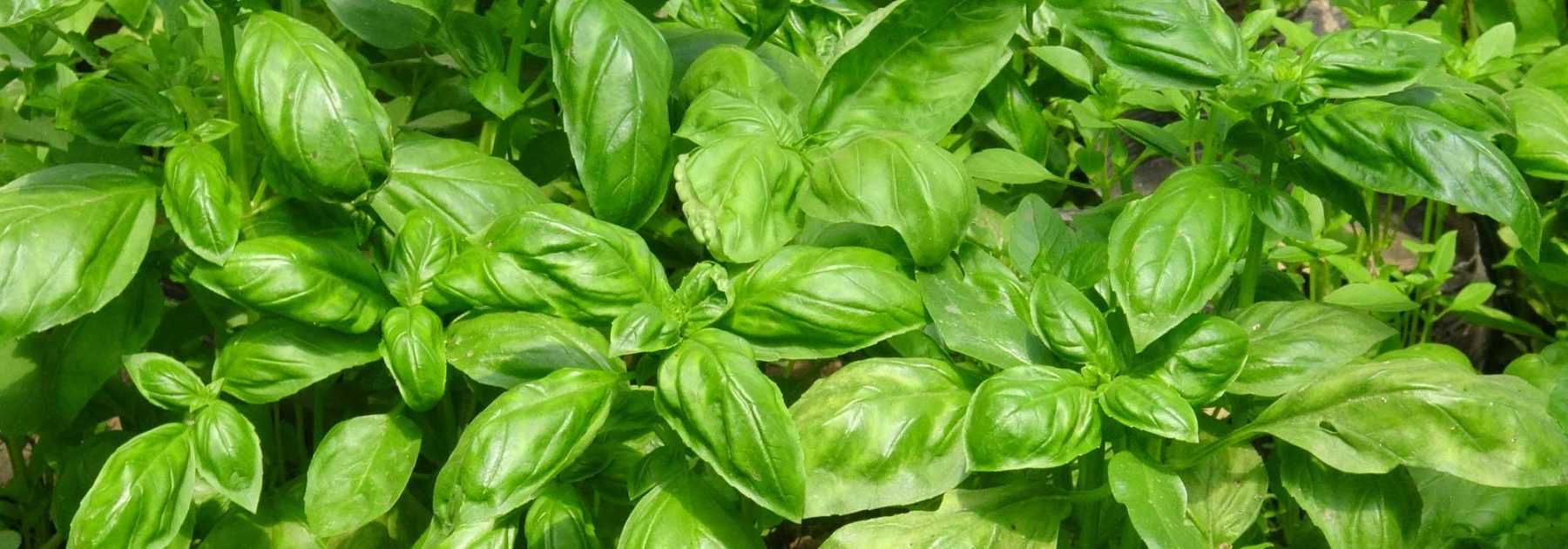
Basil: Sowing, Planting, Growing
Contents
Basil in a nutshell
- Basil, Ocinum basilicum, is an annual aromatic herb
- It can be grown in the garden but also thrives in pots on terraces or balconies
- Easy to cultivate, though it prefers warmth and sunshine
- Maintenance simply requires regular pruning and watering during dry spells
- A kitchen favourite, basil is the essential ingredient in classic Italian pesto
Our expert's word
Basil is an essential aromatic herb for any garden. Its fragrant leaves are widely used in cooking, particularly in Italian cuisine but also in Asian dishes, like with Thai Basil. It’s also a plant with multiple benefits, known to aid digestion.
We’re all familiar with ‘Grand Vert’ basil and ‘Fin Vert’ basil, but far fewer people know about other varieties. And there are so many! They can be distinguished by their growth habit (more or less compact), leaf size, and colour ranging from green to deep purple, sometimes almost black like the ‘Dark Opal’ variety. All varieties release delightful distinctive fragrances, which is their main appeal!
Easy to grow, basil cultivation is within reach of all gardeners, even without a garden as it thrives in pots. It loves sunshine and warmth and does well in any good humus-rich, well-drained soil… as it dislikes excessive moisture.
Sowing basil is typically done indoors, at home or in a heated greenhouse. Planting outdoors, whether in garden beds or containers, should only occur after the Ice Saints period, once all risk of frost has passed. Indeed, it’s not frost-hardy and therefore sensitive to cold. Basil care is straightforward: simply harvest regularly and water during prolonged dry spells.
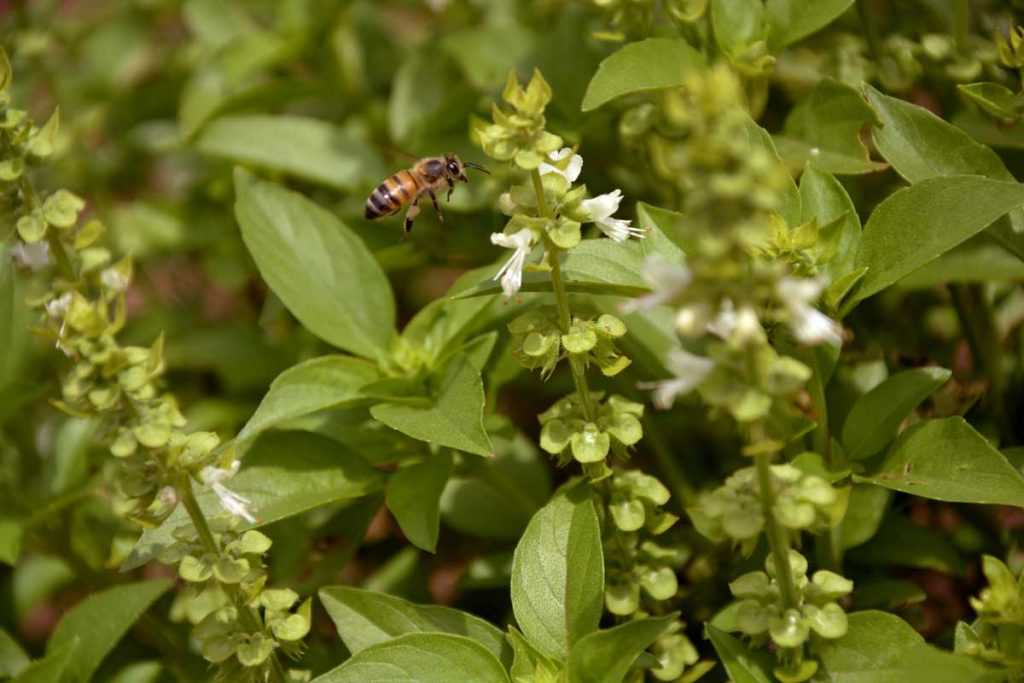
Basil is a nectar-producing plant
Description and botany
Botanical data
- Latin name Ocimum basilicum
- Family Lamiaceae
- Common name Basilic
- Flowering Annuelle
- Height 10 jours à 20°C - Faculté germinative
- Exposure Soleil
- Soil type Riche, humifère, drainant
- Hardiness 0°C, il meurt aux premières gelées
European Basil (Ocimum basilicum) is an aromatic herb native to the Pacific Islands and Africa. This herbaceous plant grows 30 to 60 cm tall and 20 to 40 cm wide, depending on the variety and growing conditions.
The stems are upright and branched with a square cross-section, a typical characteristic of the Lamiaceae family, formerly known as Labiatae. These stems bear oval leaves 3 to 5 cm long. Their size and colour vary depending on the variety: they can be very large or very small and display green or purple hues of varying intensity.
In mid-summer, basil produces flowering spikes bearing clusters of small white or mauve flowers. These require insects to carry pollen and facilitate pollination. Once fertilised, the flowers develop into small seeds, each enclosed in a receptacle that dries out upon maturity in September or October. The seeds then fall to the ground quite easily.
The use of basil in the Mediterranean basin dates back to antiquity. For the Romans, this plant was an emblem of lovers, while for the Greeks, it symbolised hatred and misfortune. In India, basil is considered a sacred plant!
Read also
Sowing aromatic herbsThe main varieties
There are many varieties of basil. They differ in colour (purple, green), leaf size, as well as their fragrance and growth habit, which can be more or less compact.
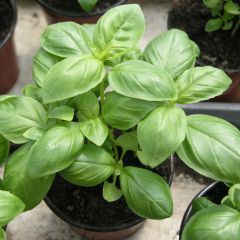
Genovese Basil
- Height at maturity 50 cm
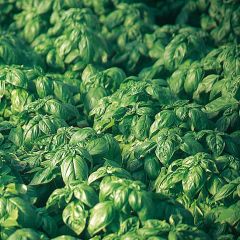
Sweet Basil Organic - Large leaf Italian Basil
- Height at maturity 50 cm
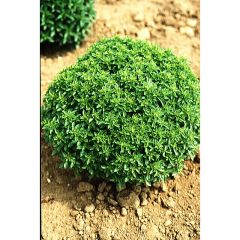
Basil Fino Verde - Bush basil
- Height at maturity 50 cm
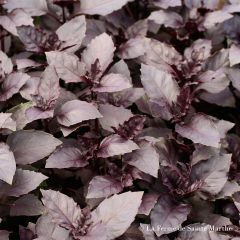
Organic Purple Basil - Ferme de Sainte Marthe seeds
- Flowering time July to October
- Height at maturity 30 cm
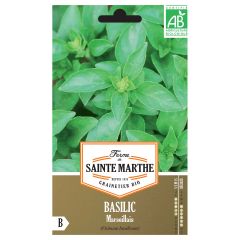
Marseille Basil - Ferme de Sainte Marthe Seeds
- Flowering time July to October
- Height at maturity 30 cm
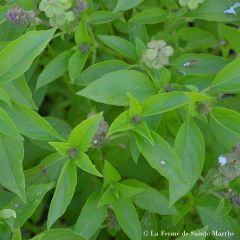
Anise Basil - Ferme de Sainte Marthe seeds
- Flowering time July to October
- Height at maturity 30 cm
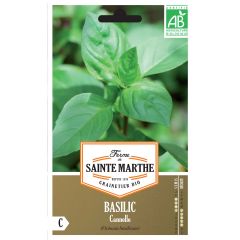
Cinnamon Basil - Ferme de Sainte Marthe seeds
- Flowering time July to October
- Height at maturity 30 cm
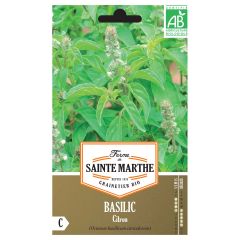
Lemon Basil - Ferme de Sainte Marthe seeds
- Flowering time July to October
- Height at maturity 30 cm
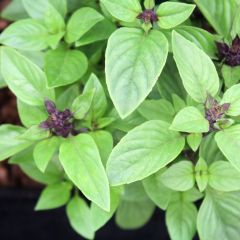
Thai Basil - Ferme de Sainte Marthe Seeds
- Flowering time July to October
- Height at maturity 30 cm
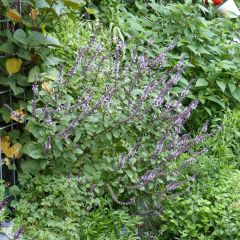
Perennial Magic Mountain Basil in seedlings
- Flowering time July to September
- Height at maturity 40 cm
Discover other Basil plants
View all →Available in 1 sizes
Available in 1 sizes
Available in 1 sizes
Available in 2 sizes
Available in 1 sizes
Available in 1 sizes
Available in 1 sizes
Available in 2 sizes
Available in 1 sizes
Available in 1 sizes
Sowing basil
Start sowing basil in warmth, indoors or in a heated shelter, from February to April. You can sow either in individual pots or in a seed tray. From May onwards, sow directly in the ground. The bottom of the tray or pots should have small drainage holes to allow excess water to escape. Germination typically takes around 10 days at an average temperature of 20°C, protected from direct sunlight.
- Fill the seed tray two-thirds full with compost and lightly firm it down with a trowel.
- Place the seeds, leaving at least 2 cm between each one.
- Cover the seeds with a thin layer of sowing compost (ideally using a sieve) and lightly firm it down with a trowel.
- Water lightly using a spray bottle.
To encourage germination, cover the tray with a pane of glass. Ventilate during the day by lifting the glass once the seedlings have emerged.
For seedlings sown in trays, carefully transplant them into pots when they have more than three true leaves (the first two leaves that appear after sowing are cotyledons and are not counted). Keep the plants protected from frost.
Read also
How to sow basil?Planting Basil
Seedlings grown from warm-sown seeds must be hardened off for at least two weeks by exposing them to outdoor temperatures and direct sunlight during the day, then bringing them indoors or sheltering them at night. This acclimatisation phase ensures a gentle transition, as seedlings raised indoors under ideal conditions need time to gradually adjust to direct sunlight, fluctuating temperatures, and inclement weather. This process prevents basil plants from suffering too much when they are finally planted in the vegetable garden. After this hardening-off period, they can be safely transplanted outdoors.
Planting in the vegetable garden should begin once the risk of frost has passed. This period typically spans from mid-April to late May, depending on the region and the year’s weather. Traditionally, frost-sensitive plants like basil are planted after the Ice Saints period, i.e., after 13th May.
As basil thrives in sunlight, choose a warm, sunny spot for planting. In southern regions, however, partial shade is preferable.
When planting, allow 25 cm spacing between plants. As with sowing, plant in loose, weed-free soil. Follow these steps:
- Dig a hole matching the size of the seedling
- Place your basil plant in position
- Fill gaps with soil
- Water thoroughly. Rainwater warmed by sunlight is particularly beneficial.
Growing Basil: Care and Watering Tips
Soil and Exposure
Basil thrives in sunny spots, or partial shade in warmer regions. It grows well in a wide range of soils but prefers humus-rich, well-draining and cool soils.
Whether planted from seeds or seedlings, it should be placed in soil that has been loosened and thoroughly weeded beforehand. To achieve this, break up the soil using a grelinette or garden fork, carefully removing any grass and weeds.
Basil Care and Watering
Drought tends to trigger basil flowering, to delay this phenomenon:
- Trim the tops of the stems
- Ensure regular watering with preferably lukewarm rainwater
- Pinch off flower spikes to stimulate new leaf growth
- Apply a nutritious mulch made from dried grass clippings
→Read also: Our best tips for successful basil cultivation.
Companion Planting with Basil
In the vegetable garden, a good combination is planting basil between each tomato plant. Basil roots secrete substances that protect tomatoes from nematodes. These are called nematicidal substances as they kill nematodes – microscopic worms that parasitise tomato roots and weaken plants, sometimes leading to their death.
It’s also an extremely practical pairing – you can harvest tomatoes and basil from the same spot, perfect for creating a summer salad full of flavour!

Basil in a pot
Basil is an easy and practical herb to grow in pots, here’s how to do it:
- Place one to two centimetres of clay pebbles or volcanic rock (pouzzolane) at the bottom of the pot (with drainage holes) for proper drainage.
- Fill your pot with universal potting mix, which you can enrich with homemade compost at a ratio of 1/3 compost to 2/3 potting soil.
- Transplant young seedlings, spacing them 5 cm apart.
- If sowing directly in the pot, sow more generously and thin out later to keep the strongest seedlings.
- Water lightly using a spray bottle.
Once the seedlings are well established, water from above or soak the pots in sun-warmed water, preferably rainwater.
In spring, when temperatures are warm enough, pots can be placed outside—on a windowsill, balcony, or terrace. As with garden planting, choose a sunny or lightly shaded spot and ensure the soil never dries out completely.
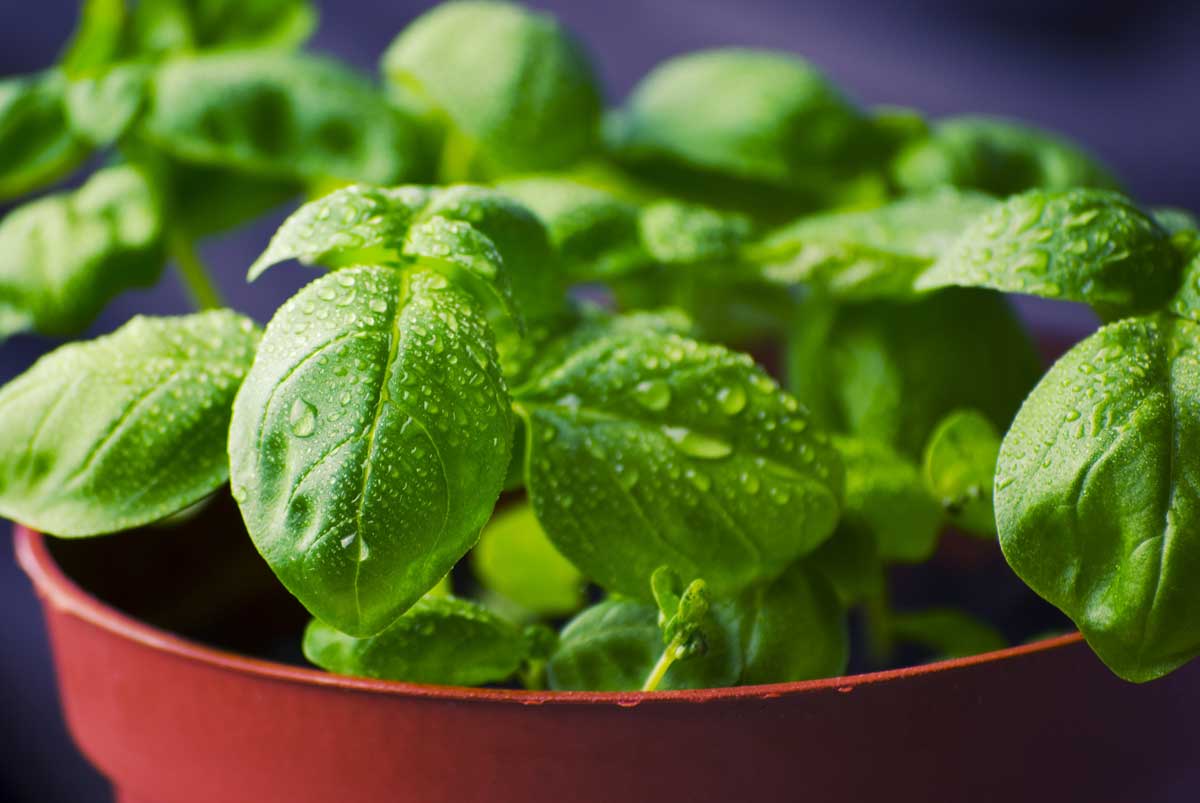
Basil grown in a pot
Sowing in pots can be done from spring to late summer. For fresh basil pots by year-end, sow outdoors in August. The plants will have time to soak up sunlight before being brought indoors (by October) before the first frosts—preferably placed on a sunny windowsill.
If starting with store-bought seedlings, don’t hesitate to cut back half the stems before repotting. This will stimulate the plant to produce new roots and shoots.
A well-maintained basil pot provides roughly four months of harvests. During growth, apply a gentle natural fertiliser like dried coffee grounds, mixed equally with potting soil or garden compost, then top-dress the pot with a 1 cm layer of this blend.
Harvesting and preserving basil
Harvesting Basil
From early summer to autumn, harvest the leaves as needed, simply by picking them by hand or with scissors.
To extend the harvest sustainably, encourage the basil to produce new shoots. To do this, regularly pick (when possible) the terminal sprigs, which allows new shoots to develop. The secondary stems take over the growth, keeping the plant dense, stocky and bushy, while also delaying flowering.
In the first photograph, you can see two young shoots at the leaf axils (below the scissors). By cutting the main stem at this point, the two shoots take over, as clearly visible a few days later (second photo).

1) Cutting the terminal shoot 2) The shoots at the leaf axils take over
Preserving Basil
After picking, basil leaves do not keep for long and tend to turn black. The best approach is to harvest them fresh as needed. However, here are some good preservation methods:
To keep basil fresh for about a week, cut stems and place them in a glass of water. Change the water every two days to prevent the leaves from yellowing and the stems from rotting.
To preserve basil leaves for about a year, you can dry the leaves on racks until they lose most of their moisture—they should be completely dry and crumbly. Then store them in airtight containers away from light.
Freezing is also an option. A simple and practical method is to chop the leaves and place them in ice cube trays, covering them with water before freezing.
Lastly, and most importantly, you can make pistou or pesto—two recipes that allow basil to be kept for a few days in the fridge or several months in the freezer.
Uses – A Few Recipes
Using Basil in Cooking
Basil is widely used in Mediterranean cuisine as well as in Asian cooking. Its fresh or dried leaves are enjoyed in salads, marinades, or sauces (such as pesto), accompanying pasta, meat, or fish (like sea bream à la varoise).
Pistou and pesto are two essential basil-based recipes, though they are quite distinct:
- Pesto, developed in the late 19th century in Italy (Genoa), is traditionally made with Genovese basil. Other ingredients include olive oil, Parmesan or Pecorino cheese, garlic, and pine nuts.
- Pistou is the Provençal adaptation of pesto. The recipe consists primarily of Marseille basil, garlic, and olive oil. Pine nuts and cheese are optional in pistou.
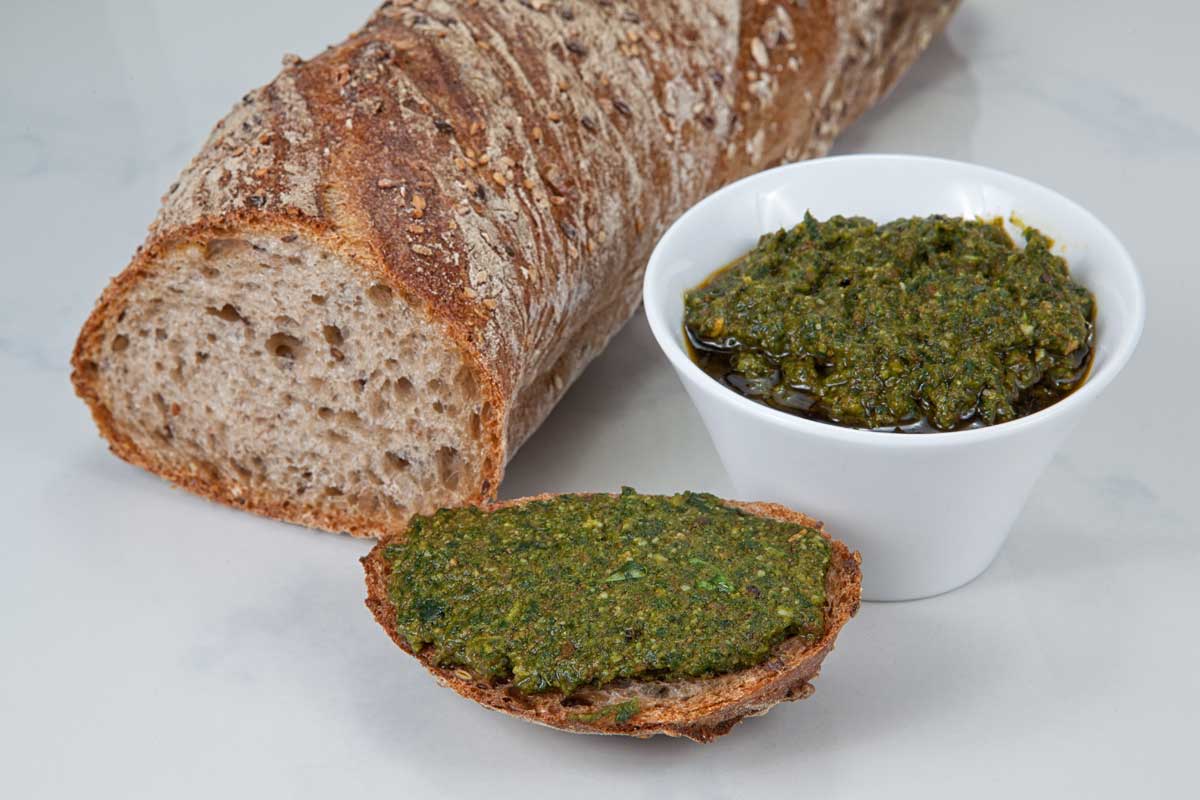
The quintessential pesto!
- Caprese Salad
The famous Italian Caprese salad (tomato and mozzarella) is made by slicing tomatoes and mozzarella and arranging them alternately. It is garnished with finely chopped basil leaves and dressed with a drizzle of olive oil, salt, and pepper.

Tomato, mozzarella, and basil
- Pistou Soup
Pistou soup is a traditional Provençal dish typically enjoyed in summer. The soup consists of bacon with fresh shelled white and red beans, along with garden vegetables—usually green beans, carrots, courgettes, and potatoes. The pistou is added at the end of cooking, giving this Provençal soup its distinctive flavour.
- Summer Tomato-Basil Salad from the Garden
Straight from the garden, pick a few ripe tomatoes of different colours, still warm from the sun, slice them thinly, and top with chopped basil, a drizzle of high-quality olive oil, a pinch of fleur de sel, and a twist of black pepper—voilà, a delicious salad!
The Benefits of Basil
Basil aids digestion and can be consumed as an infusion after a heavy meal.
It is rich in antioxidants, compounds that help slow cell ageing and reduce the risk of cardiovascular diseases. Regular consumption is beneficial for health.
Basil flowers contain an essential oil rich in eucalyptol and eugenol. Its use helps combat anxiety and infections, acting as an antispasmodic, anti-inflammatory, and antibacterial with calming and relaxing properties.
Holy basil, used in Ayurvedic medicine, is employed in India to prevent and treat various ailments, including gastric issues, diarrhoea, bacterial and fungal infections, inflammation, and headaches.
Growing Your Own Basil Seeds
Basil requires considerable heat to produce viable seeds. As not all climates in mainland France are equal, seeds are typically harvested in the South, in Provence, or potentially by growing under glass for more northern climates.
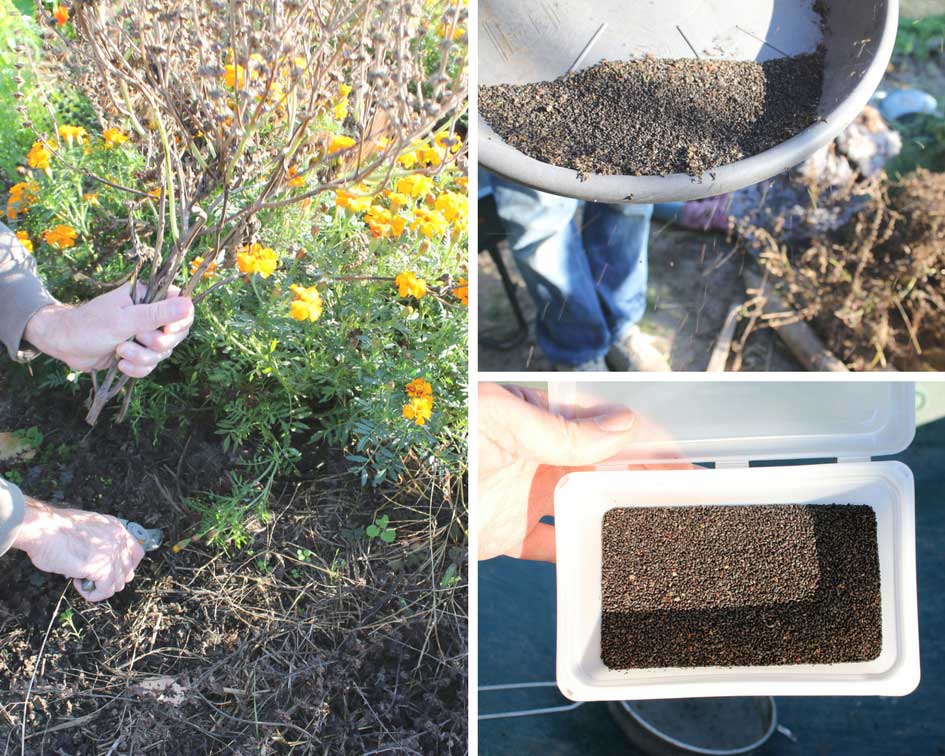
For larger harvests, cut entire dried plants, sieve then winnow to separate debris from seeds. Store seeds in non-airtight containers.
To prevent cross-pollination between varieties, only allow one variety to seed per year or space different varieties at least 100 metres apart. In September or October, when flower spikes dry out, cut them and rub the receptacles between fingers to release the seeds. Avoid heavy leaf harvesting from plants intended for seed production, though ensure they retain good flavour.
Basil seeds should not be stored in airtight containers but rather in paper bags. Indeed, basil seeds are mucilaginous – when exposed to water or excessive humidity, mucilage forms around the seed. Composed of sugars, this mucilage may dry but then renders the seed vulnerable to mould development.
Useful resources
Discover:
- Our wide range of basil: many varieties available as seeds or plants.
- Learn more about sowing basil
- Our selection: 6 must-have basil varieties
- Perennial basil: a sustainable alternative to common basil
- Guide: How to grow basil in pots?
- Guide: Choosing basil: our buying guide
- Discover 8 aromatic herbs for Mediterranean cuisine
Frequently asked questions
-
Why isn't my basil germinating?
It is entirely possible for seeds not to germinate, even for the most experienced gardeners:
A seed is a living thing. The gardener should check the germination capacity, which is the period during which the seed is capable of sprouting. This information is always indicated on seed packets. For basil, it ranges from 4 to 8 years depending on the seed quality, which largely depends on the harvest year.
Poor storage conditions reduce germination capacity. Keep your seed packets indoors in a dry place, not too warm in summer, and away from direct sunlight.
Most vegetable and herb seeds have two (sometimes more) essential requirements for successful germination: sufficient temperature and moisture. The most important factor is maintaining consistent moisture—neither excessive nor insufficient. To achieve this, water lightly and regularly during germination and continue while the plants are young. Seeds should also be sown during the periods indicated on the packets. Basil seeds have a third requirement—they need light to germinate well (even under a few millimetres of soil).
Damping-off is another possible but rarer issue, caused by various pathogenic fungi that kill young seedlings. This can be prevented by avoiding overwatering and by sprinkling the sowing with charcoal or cinnamon powder.
-
Why are my basil leaves turning black?
Basil leaves turn black when there's excess water around the roots. Basil is a plant that enjoys moisture but dislikes waterlogging. That's why the soil (or growing medium) must be sufficiently well-draining to allow excess water to escape.
If this problem occurs in pot cultivation, you should stop watering for a while, and crucially, never leave standing water in the saucer. In open ground, this is less common but can happen if the soil is too heavy. In such cases, consider planting your next crop on slight mounds or in raised beds to allow faster drainage around the roots.
- Subscribe!
- Contents


































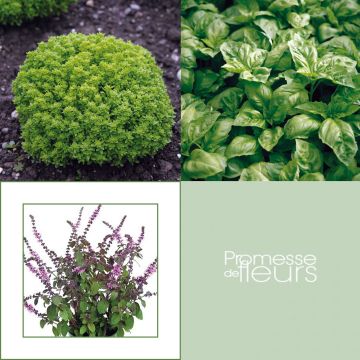
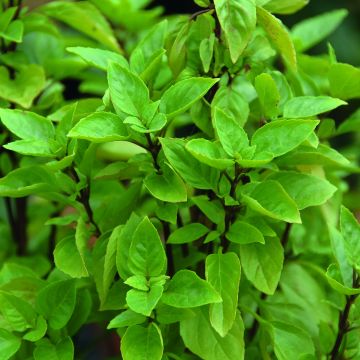
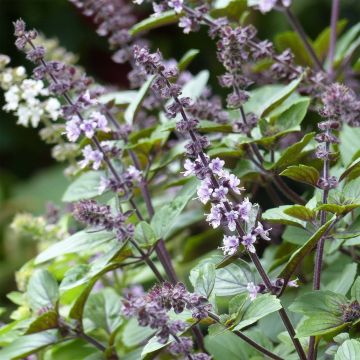

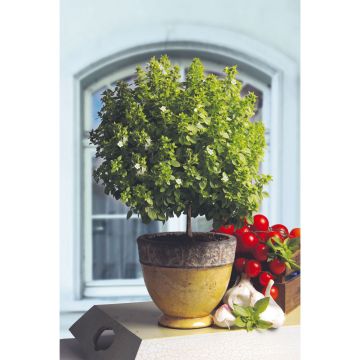
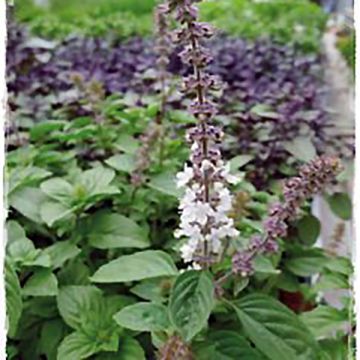
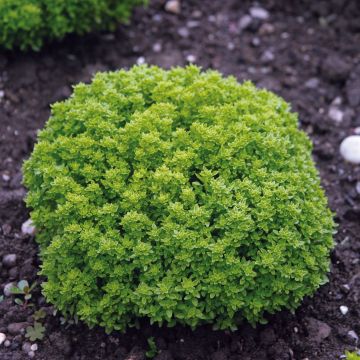


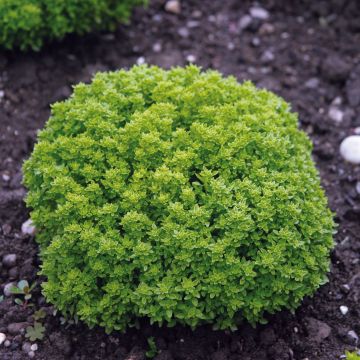
Comments